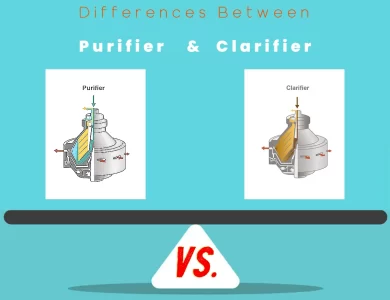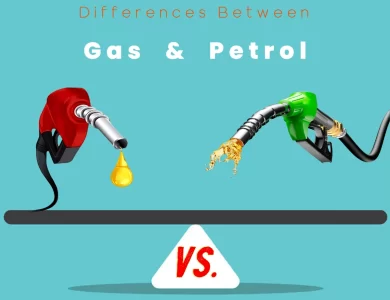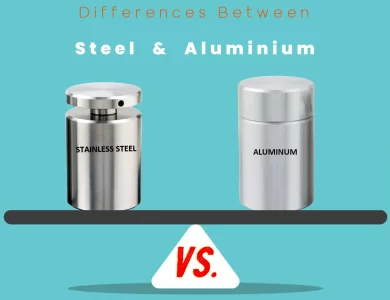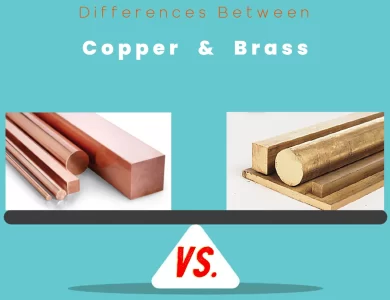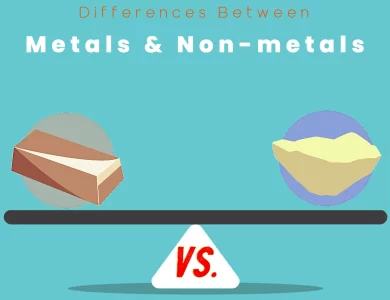Industrial Chemistry
Welcome to our comprehensive category page dedicated to the intriguing realm of Industrial Chemistry! Here, we delve into the diverse aspects of this fascinating field, focusing specifically on the differences in terms and other essential elements that shape its landscape. Whether you’re an aspiring chemist, a curious learner, or simply someone interested in the inner workings of industries, this is the perfect resource for you.
In this vast and ever-evolving discipline, understanding the nuances of various terms and concepts is crucial. We’ll embark on a journey of exploration, shedding light on the distinctive features and characteristics that distinguish one term from another. From chemical reactions and processes to industrial applications and equipment, we’ll dive deep into the realm of Industrial Chemistry.
-

Clarifier vs Purifier
Are you intrigued by the world of industrial equipment and the intricacies of liquid processing? If so, you're about to embark on a journey that unveils the fundamental distinctions between two remarkable machines: purifiers and clarifiers. These unsung heroes of various industries wield unique capabilities, and understanding their differences is key to choosing the right one for your specific needs. Purifiers are precision instruments designed to elevate liquid quality by eliminating impurities such as solid particles and water. They achieve this through the powerful force of centrifugation, making them ideal for industries like marine, oil refining, and precision manufacturing, where the purity of fluids is paramount. Purifiers excel at meticulous separation, ensuring the highest liquid quality possible. Clarifiers, on the other hand, are specialists in solid-liquid separation. Operating on the principle of gravity settling, they efficiently remove solids from liquids. Clarifiers find their niche in wastewater treatment, mining, agriculture, and other industries where efficient separation is the primary goal. Their simplicity in design and minimal maintenance requirements make them a cost-effective choice. As you delve deeper into the differences between purifiers and clarifiers, you'll gain insights into their distinct applications, design complexities, maintenance needs, and cost considerations. So, whether you prioritize liquid quality enhancement or efficient solid-liquid separation, this exploration will guide you toward the right choice for your liquid processing endeavors.
-

Nuclear Bomb vs Nuclear Reactor
In the realm of nuclear science and technology, two entities stand in stark contrast: the nuclear reactor and the nuclear bomb. While they both involve the release of nuclear energy, their purposes, functions, and implications couldn't be more different. Nuclear Reactor: A nuclear reactor is a remarkable piece of engineering designed with a singular, constructive aim – to generate electricity. These reactors are integral to the global energy infrastructure, providing a substantial portion of the world's electricity through controlled nuclear reactions. They operate by harnessing the heat generated from nuclear fission, a process where the nucleus of an atom is split into smaller fragments. This controlled chain reaction releases a tremendous amount of heat, which is then used to produce steam. The steam powers turbines, ultimately generating electricity. The consequences of a well-maintained and safely operated nuclear reactor are largely positive, including clean energy production with minimal greenhouse gas emissions. However, they do produce radioactive waste, which requires careful management and disposal. Nuclear Bomb: In stark contrast to nuclear reactors, nuclear bombs are instruments of destruction. Their sole purpose is to unleash an enormous amount of energy in the form of a nuclear explosion, resulting in mass devastation and loss of life. Nuclear bombs operate on the principles of uncontrolled nuclear chain reactions, rapidly releasing the energy stored in fissile materials. This release leads to a cataclysmic blast, accompanied by intense heat, radiation, and the infamous mushroom cloud. The consequences of a nuclear bomb are overwhelmingly negative, causing widespread death, destruction of infrastructure, and long-lasting environmental damage. The release of radiation can result in severe health issues for survivors and contaminate large areas for extended periods, leaving a haunting legacy. Understanding the fundamental disparities between these two powerful technologies is not only an exercise in knowledge but also a critical…
-

Pig Iron vs Sponge Iron
In the realm of iron production, two distinct players take center stage: Sponge Iron and Pig Iron. While they both share the common element of iron, the differences between them are profound and consequential. Let's delve into the intricacies of Sponge Iron vs Pig Iron and uncover the key distinctions that set them apart. Production Process: The primary disparity lies in their production processes. Sponge Iron is crafted through direct reduction, a method that involves reducing iron ore using a reducing gas or solid reductant at lower temperatures. This results in a porous, sponge-like structure, giving it its name. In contrast, Pig Iron is born in the fiery depths of a blast furnace, where iron ore is smelted with coke and limestone. This process yields a dense, carbon-rich material. Chemical Composition: Chemically, they diverge significantly. Sponge Iron is celebrated for its low carbon content, typically below 0.1%, and minimal impurities. Pig Iron, on the other hand, boasts a higher carbon content, approximately 3-4%, and contains variable impurities like silicon, phosphorus, and sulfur. Applications: Sponge Iron finds its niche in applications requiring clean, low-carbon iron, such as steel production and powder metallurgy. Pig Iron, with its high carbon and impurities, is best suited for cast iron production, foundry work, and certain steelmaking processes. Environmental Impact: When considering environmental factors, Sponge Iron gets the green nod. Its production generates lower carbon emissions and is more energy-efficient compared to the energy-intensive process of producing Pig Iron. The choice between Sponge Iron and Pig Iron boils down to your specific needs, priorities, and sustainability goals. Each has its merits, and understanding their differences is pivotal in making informed decisions in the world of iron production.
-

Petrol vs Gas
When it comes to fueling your vehicle, the choice between gas and petrol is often determined by regional terminology and measurement units. In the United States, "gasoline" or simply "gas" is the prevalent term, while in many other parts of the world, "petrol" is the preferred word. However, beyond the terminology differences, these fuels are essentially identical, both derived from crude oil and consisting of hydrocarbons. One notable distinction lies in the pricing structure, with gas priced in dollars per gallon in the U.S. and petrol priced in local currency per liter in most other countries. Fuel efficiency is another area where these terms diverge, with gas using miles per gallon (MPG) and petrol employing liters per 100 kilometers (L/100 km) for measurement. Despite these differences, both gas and petrol share common traits in terms of vehicle compatibility and environmental impact. They are compatible with most internal combustion engines and contribute to carbon emissions when burned. Additionally, both fuels are subject to ongoing research and development efforts to reduce their environmental footprint and promote cleaner alternatives. Ultimately, your choice between gas and petrol should consider factors like your geographical location, vehicle compatibility, and budget. Whether you call it "gas" or "petrol," understanding these key differences empowers you to make an informed decision at the pump.
-

Aluminum vs Alloy
Are you facing the dilemma of choosing between alloy and aluminum for your next project? This decision can significantly impact the outcome, whether you're constructing a towering skyscraper, designing an efficient aerospace component, or even selecting the perfect cookware for your kitchen. To make an informed choice, let's delve into the differences between these two materials. Alloy, in essence, is an amalgamation of two or more elements, often including metals and sometimes non-metals, meticulously engineered to exhibit specific properties. These properties can range from remarkable strength and durability to superior corrosion resistance and electrical conductivity. Alloys span a broad spectrum, encompassing stalwarts like steel, brass, bronze, and high-strength alloys. Each alloy type boasts unique characteristics, making them suitable for diverse industries and applications. Aluminum, on the other hand, is a lightweight metal, denoted by the symbol Al, naturally occurring in the Earth's crust. It stands out for its low density, rendering it about one-third as heavy as steel. This characteristic makes aluminum a favored choice in industries where weight reduction is paramount, such as aerospace and automotive. Yet, aluminum's appeal extends beyond its lightweight nature; it boasts excellent thermal and electrical conductivity and corrosion resistance, further enhancing its versatility.
-

Aluminium vs Steel
When it comes to choosing materials for your projects, the steel vs aluminium debate takes center stage. These two metals offer unique properties that cater to various industries and applications. Steel, known for its robustness, is an alloy of iron and carbon. Its diverse types, from carbon steel to stainless steel, provide varying levels of strength and corrosion resistance, making it a go-to for construction, machinery, and more. On the other hand, aluminium boasts lightweight versatility. Derived from bauxite, it forms a protective oxide layer, rendering it corrosion-resistant without coatings. This quality, along with its excellent thermal conductivity, makes aluminium a preferred choice in aerospace, transportation, and packaging. Deciding between steel and aluminium boils down to factors like strength requirements, weight constraints, and industry-specific needs. Both materials have their place in a wide range of projects – from towering skyscrapers to fuel-efficient vehicles. By understanding the differences, you can confidently choose the material that aligns with your project's goals, ensuring optimal performance and durability.
-

Brass vs Copper
Diving into the world of metals reveals the intriguing disparities between copper and brass. While both boast unique qualities, their differences are striking. Copper, an elemental marvel symbolized as Cu, reigns supreme in electrical and thermal conductivity. Its reddish-brown hue matures into a protective patina, granting it a distinct charm. On the other hand, brass, a captivating alloy of copper and zinc, marries malleability with strength. The spectrum of colors it adorns, from golden to silvery, makes it an aesthetic marvel. While copper excels in electrical engineering and plumbing, brass shines in artistic endeavors and architectural finesse. The question of whether to choose copper or brass finds answers in their attributes, applications, and your project's unique demands. This exploration unravels the magic behind these metals, helping you make an informed choice that aligns with your vision and purpose.
-

Non-Metals vs Metals
Welcome to a captivating journey through the captivating realms of metals and non-metals. In this blog, we'll uncover the secrets behind these elemental entities and explore their unique properties, applications, and significance in our everyday lives. From the shiny brilliance of metals to the versatile characteristics of non-metals, we'll delve into their distinct attributes that shape our physical world. Metals, with their characteristic metallic luster, exceptional strength, and conductivity, find applications in construction, transportation, electronics, and jewelry. Meanwhile, non-metals, which lack the metallic luster, exhibit diverse properties and play vital roles in healthcare, energy production, agriculture, and beyond. We'll delve into their contrasting physical and chemical properties, from malleability and ductility to their reactivity and bonding characteristics. Join us on this captivating adventure as we explore the interplay between metals and non-metals, their impact on our environment, and the importance of sustainable practices. We'll unravel the mysteries behind their extraction, production, and disposal, while highlighting the efforts being made to minimize their environmental footprint. By the end of this blog, you'll gain a deeper understanding of how metals and non-metals shape our world and the steps we can take to foster a more sustainable future. So, get ready to embark on a journey through the wonders of metals and non-metals, where shimmering brilliance and versatile properties await. Let's delve into the captivating world of elements and expand our knowledge of these fundamental components that surround us.
